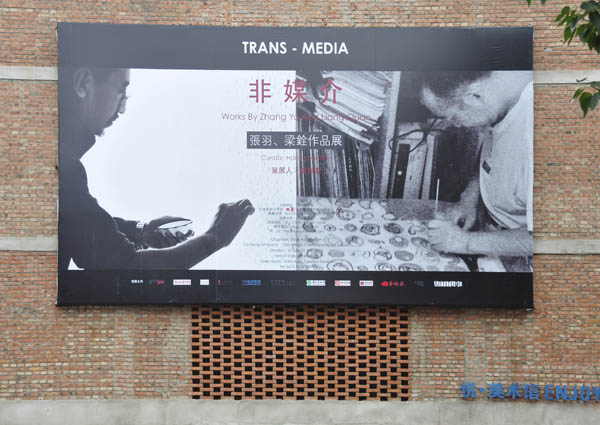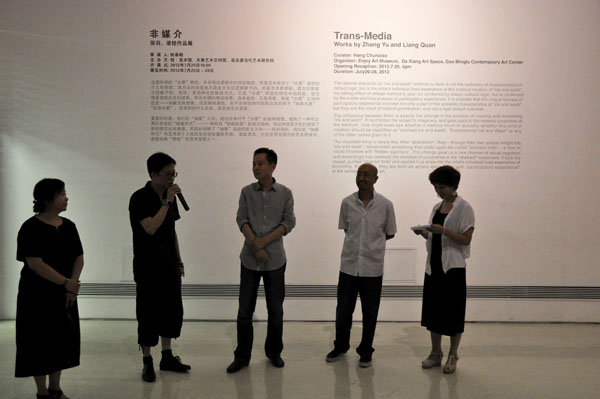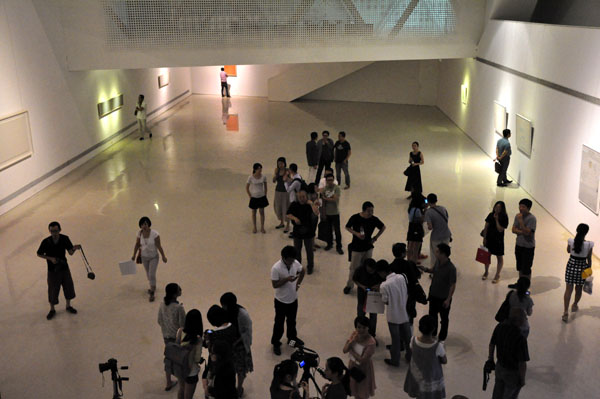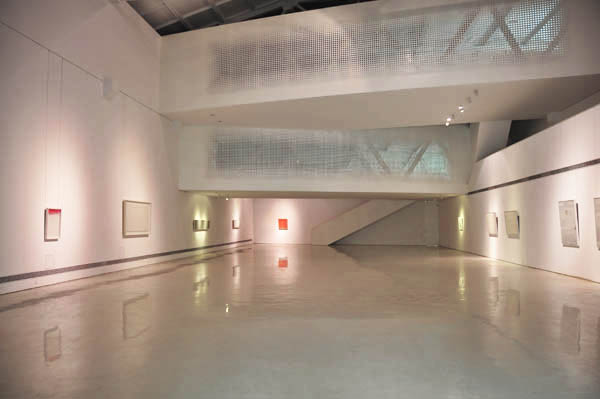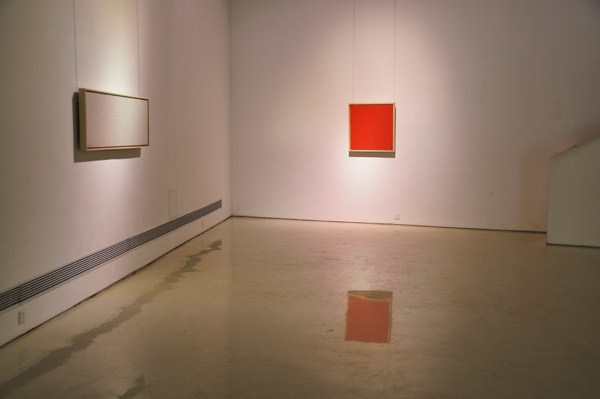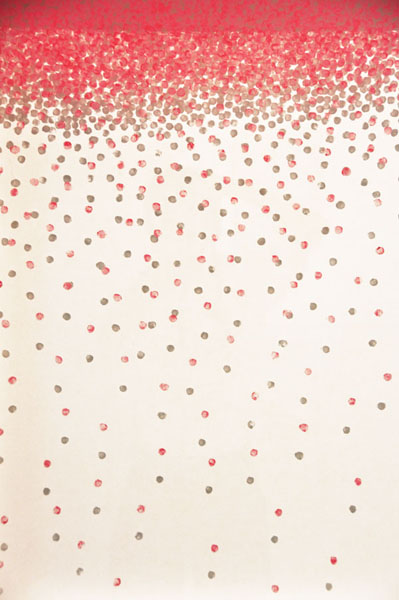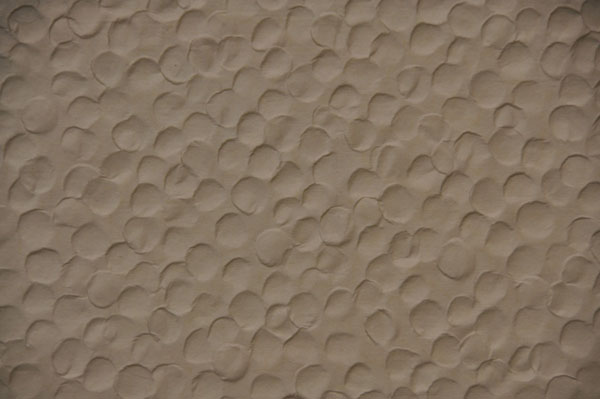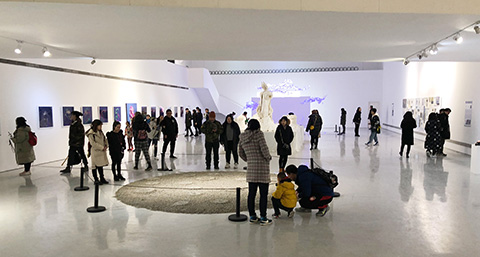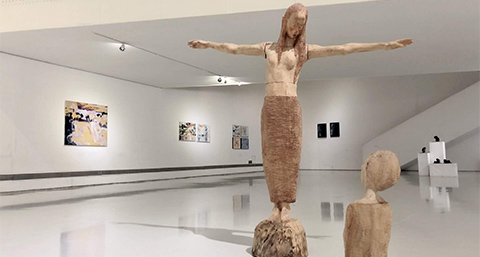
主 办:悦•美术馆
展览时间:2012年7月20日——28日
展览地址:798悦•美术馆
展览介绍:
前言
张羽近乎神经质的“按捺指印”在可见能指上留下的痕迹,暗示了这种行为背后某种“行为确认”的认知体验;而梁铨看似单纯的“贴染纸条”与可见能指的拼贴痕迹,互文了一种关乎中国画“托裱”体验的观看经验。毫无疑问,两者的“行为”不再是作品结构中可有可无的内容,而是反向于“抽象运动”试图激活“单纯视觉”言说能力的主观努力,并与最终的可见能指在互文关系中形成视觉暗示的直接性。如果,需要追问“视觉暗示的直接性”的形成原因,我想“水墨”的媒材特性起到了关键作用。无论张羽“按捺”行为,水墨与纸的晕化效果形成的叠压视觉体验;还是梁铨“贴染”行为,宣纸与水墨的积染、托裱形成的视觉厚度,都直接与“水墨”特性有着无法摆脱的关系。
但是,需要指出的是:这里所说的“水墨”特性,并非预设逻辑中的特征概括,而是艺术家对于“水墨”媒材的个人化经验,其方法的生效也不是宏大文化逻辑赋予的,而是艺术家细腻、真实的体验过程赋予的。也许,其独特化的体验方式,只是“水墨”可能的特性中的局部,但它却是自然生发的结果,而非生硬的预设结果。其中差异,正是观看、审视“水墨”立场的改变——消解主体想象,还原媒材属性。至于这样的创作到底应该归类于“抽象水墨”、“实验水墨”,还是别的什么名称,其实都无关紧要。
重要的仅是:他们在“抽象”之后,通过自身对于“水墨”的独特感悟,建构了一种可以再次言说的“抽象形式”——一种具有“隐藏能指”的视觉结构。而这种改变为我们提供了新的视觉认知通道,并因此扭转了“抽象”运动的发生方向——将封闭的、纯化的“抽象形式”向艺术家个人化的生存经验重新开放。 就此而言,它在世界范围内的艺术领域中,都是别具“体验”的艺术探索之一。
策展人:杭春晓
Preface
It is as if the traces of Zhang Yu’s almost nervous “impressed fingerprints” left in the visible signifiers hint at the cognitive participatory experience of some kind of “performative confirmation” underlying this kind of performance. Liang Quan’s seemingly simple and pure “dyed paper strip collages” and the pasted traces of visible signifiers, on the other hand refer intertextually to a lived viewing experience that relates to the participatory experience of “mounting” in Chinese painting. There can be little doubt that both their “performances” are no longer dispensable content in the structure of their works, but a subjective effort in the opposite direction from the attempt by the “abstract movement” to activate the “purely visual” speaking ability, and, in an intertextual relationship with the finished visible signifiers, to form the directness of visual hints. If we are to pursue the question of the reason for the formation of the “directness of visual hints”, I think that the particular character of the material medium of “ink and wash” plays a key role. Both the overlapping visual participatory experience formed by the halo effect of ink and wash and paper in Zhang Yu’s “fingerprinting” performance, and in the visual thickness formed by the layered dyeing and mounting of xuan paper and ink and wash in Liang Quan’s “pasting and dyeing” performance, have an ineluctable relationship directly with the special character of “ink and wash”.
However, what must be pointed out is that the special character of “ink and wash” referred to here is not the summary of characteristics of default logic, but is the artist’s individual lived experience of the material medium of “ink and wash”, the taking effect of whose method is also not conferred by macro-cultural logic, but is conferred by the subtle and true process of participatory experience. It is possible that the unique formats of participatory experience involved are only a part of the possible characteristics of “ink and wash”, but they are the result of natural germination, and not a rigid default outcome. The difference between them is exactly the change in the position of viewing and examining “ink and wash”. It neutralizes the subject’s imaginary, and goes back to the material properties of the medium. One might even ask whether it matters much in actuality whether this kind of creation should be classified as “abstract ink and wash”, “Experimental Ink and Wash” or any of the other names given to it.
The important thing is simply this: After “abstraction”, they – through their own unique insight into “ink and wash”, constructed something that could again be called “abstract form” – a kind of visual structure with “hidden signifiers”. This change gave us a new channel of visual cognition, and accordingly has reversed the direction of occurrence in the “abstract” movement. It took the closed, purified “abstract form” and opened it up anew into the artist’s individual lived experience of surviving. As for this, they are both an artistic exploration with “participatory experience” in the worldwide field of art.
Curator: Hang Chunxiao
